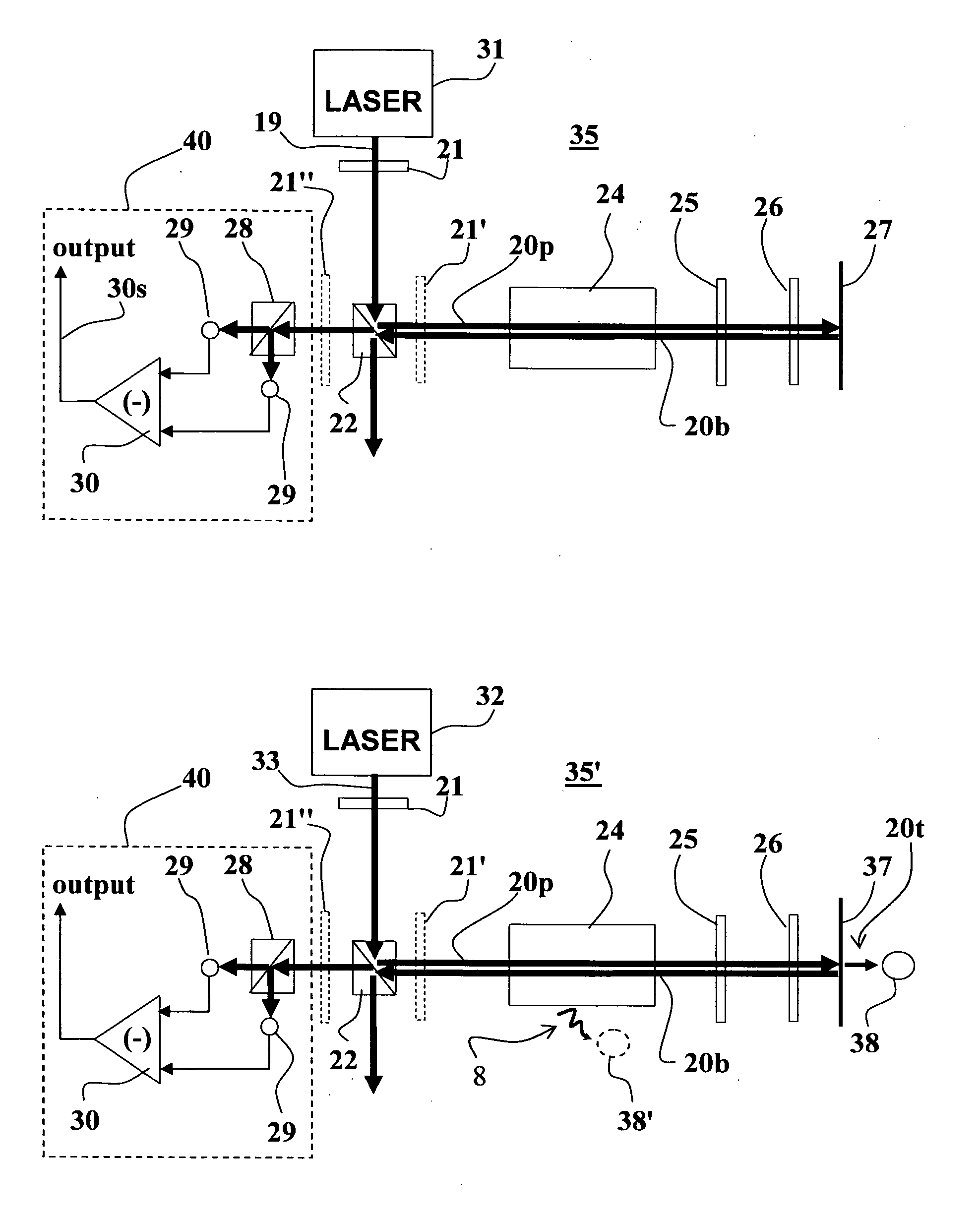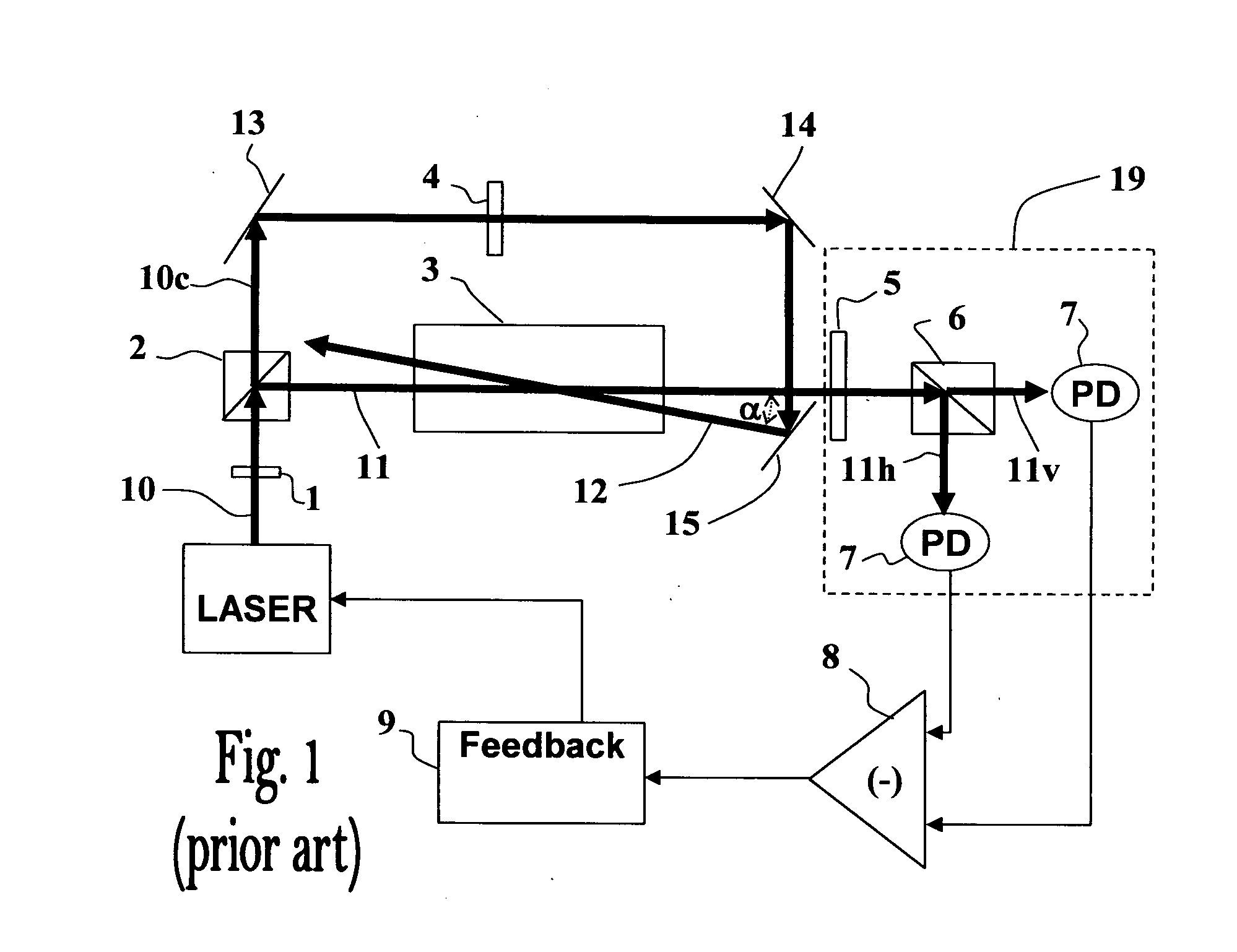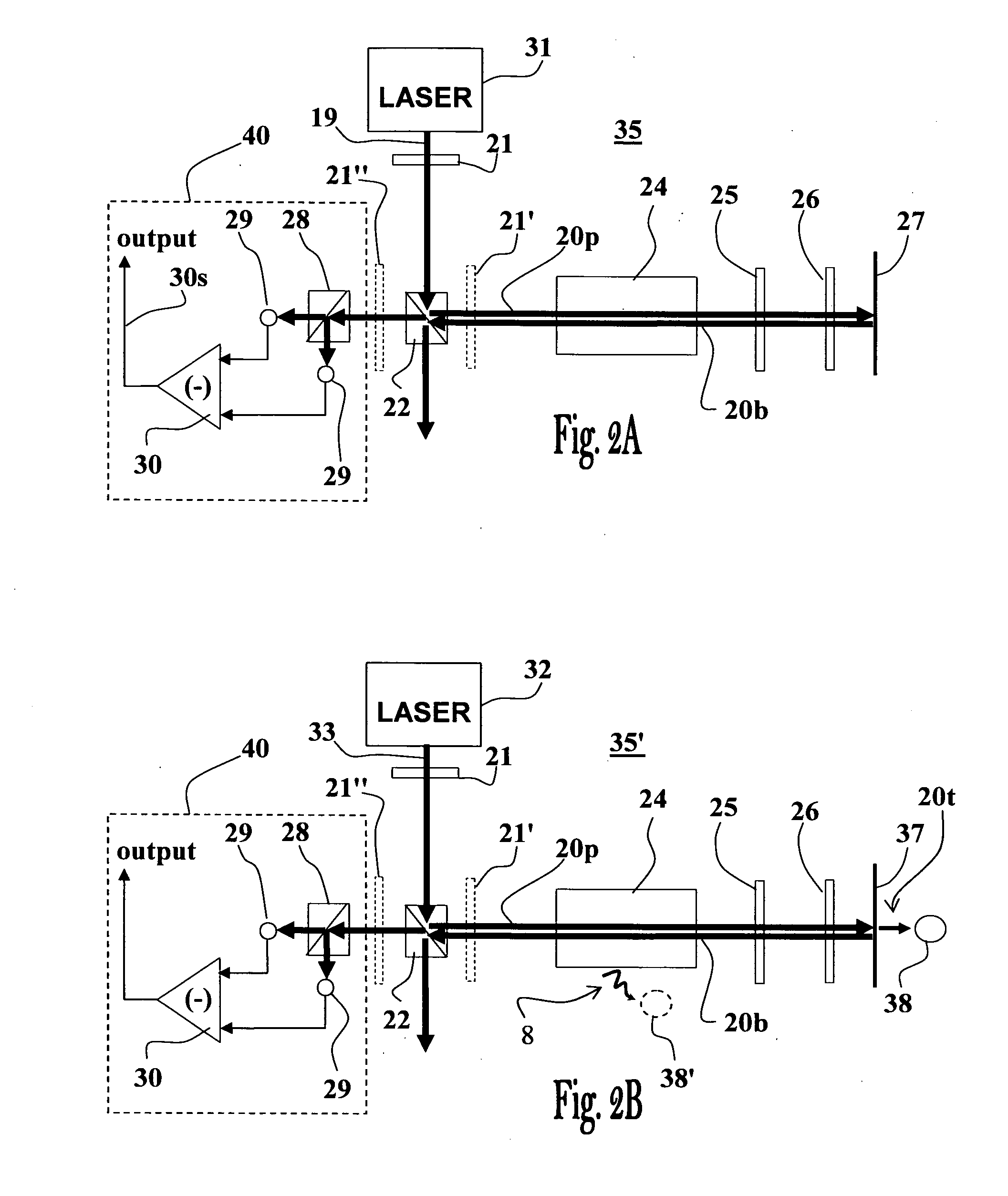Method and apparatus for high precision spectroscopy
a high-precision spectroscopy and apparatus technology, applied in the field of high-precision spectroscopy, can solve the problems of wide transition line shapes, inconvenient precision measurements, induced anisotropy, etc., and achieve the effect of improving contrast and minimizing the geometrical dimensions of the apparatus
- Summary
- Abstract
- Description
- Claims
- Application Information
AI Technical Summary
Benefits of technology
Problems solved by technology
Method used
Image
Examples
Embodiment Construction
[0057]The present invention provides a method and apparatus for retro-reflecting Doppler-free polarization spectroscopy, enabling substantially improved overlapping of pump and probe beams, improved precision of the measured signals, and miniaturization of the apparatus. The present invention further provides optical polarization spectroscopy setups suitable for measuring magnetic fields by NMOR and for CPT measurements.
[0058]With reference to FIG. 2A, showing an optical arrangement of apparatus 35 of the invention, also referred to hereinafter as the “T” shape configuration, comprising an input light beam 19 provided by a laser source 31 which is conventionally capable of producing a linearly polarized laser beam. The apparatus 35 includes a phase retarding element 21 used for circularly or elliptically polarizing the input beam 19. Apparatus 35 also includes a non-polarizing splitting element 22 (e.g., NPBS—non-polarizing beam splitter), enabling directing portion of the beam ente...
PUM
 Login to View More
Login to View More Abstract
Description
Claims
Application Information
 Login to View More
Login to View More - R&D
- Intellectual Property
- Life Sciences
- Materials
- Tech Scout
- Unparalleled Data Quality
- Higher Quality Content
- 60% Fewer Hallucinations
Browse by: Latest US Patents, China's latest patents, Technical Efficacy Thesaurus, Application Domain, Technology Topic, Popular Technical Reports.
© 2025 PatSnap. All rights reserved.Legal|Privacy policy|Modern Slavery Act Transparency Statement|Sitemap|About US| Contact US: help@patsnap.com



